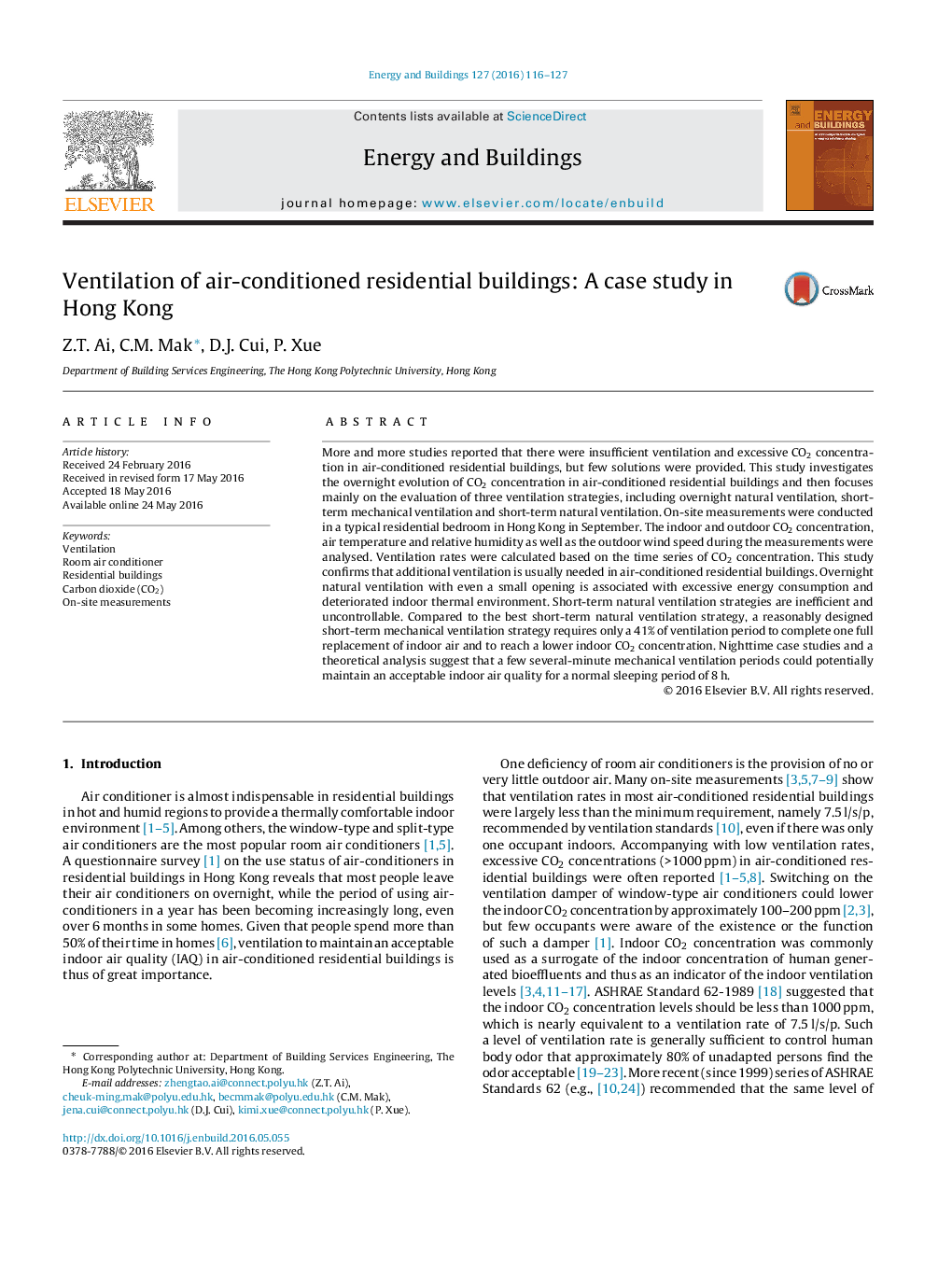| کد مقاله | کد نشریه | سال انتشار | مقاله انگلیسی | نسخه تمام متن |
|---|---|---|---|---|
| 261968 | 504007 | 2016 | 12 صفحه PDF | دانلود رایگان |
• Ventilation of air-conditioned residential buildings was investigated.
• Various ventilation strategies were evaluated via on-site measurements.
• Ventilation rates were calculated using human exhaled CO2 with uniformity guarantee.
• Short-term mechanical ventilation was overall the best and recommended.
• A few several-minute ventilation periods could cover a whole night of 8 h.
More and more studies reported that there were insufficient ventilation and excessive CO2 concentration in air-conditioned residential buildings, but few solutions were provided. This study investigates the overnight evolution of CO2 concentration in air-conditioned residential buildings and then focuses mainly on the evaluation of three ventilation strategies, including overnight natural ventilation, short-term mechanical ventilation and short-term natural ventilation. On-site measurements were conducted in a typical residential bedroom in Hong Kong in September. The indoor and outdoor CO2 concentration, air temperature and relative humidity as well as the outdoor wind speed during the measurements were analysed. Ventilation rates were calculated based on the time series of CO2 concentration. This study confirms that additional ventilation is usually needed in air-conditioned residential buildings. Overnight natural ventilation with even a small opening is associated with excessive energy consumption and deteriorated indoor thermal environment. Short-term natural ventilation strategies are inefficient and uncontrollable. Compared to the best short-term natural ventilation strategy, a reasonably designed short-term mechanical ventilation strategy requires only a 41% of ventilation period to complete one full replacement of indoor air and to reach a lower indoor CO2 concentration. Nighttime case studies and a theoretical analysis suggest that a few several-minute mechanical ventilation periods could potentially maintain an acceptable indoor air quality for a normal sleeping period of 8 h.
Figure optionsDownload as PowerPoint slide
Journal: Energy and Buildings - Volume 127, 1 September 2016, Pages 116–127
